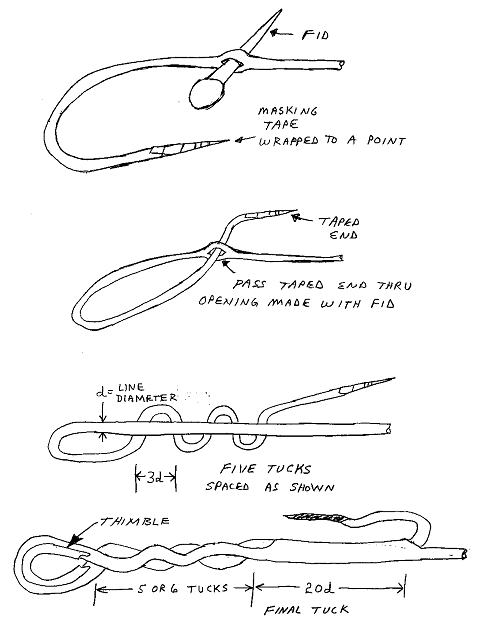Barney Harris 6701 & 8011
Both HAPCO vang and jib halyard systems are based on cascaded systems using light weight low stretch vectran line for all but the final purchase. Using vectran minimizes losses due to friction, makes the system stiff, and since vectran does not absorb water, results in an absolute minimum sailing weight. Vectan is also the easiest of the low stretch lines to splice. The splicing process is depicted in the accompanying figures. Begin by taping the end of the line to be spliced. I have found that it helps to form the tape into a point. Mark off the line – about 40 line diameters plus that required for the eye, or about 5 inches for 1/8 inch line. Using a marlin spike, make a hole through the line as shown and pass the end of the line through itself. Repeat this step for a total of five or six tucks, spacing each subsequent tuck by about 3 line diameters. Finally lead the remaining line tail up through itself, using the marlin spike to open the line up. Finish the splice by seizing with #2 Marlow waxed nylon whipping twine at the throat near the eye and near the end of the tail as shown, using a needle to stitch the seizing to the line. The splice will be smooth and can run over sheaves, and so does not detract from the system’s throw.

